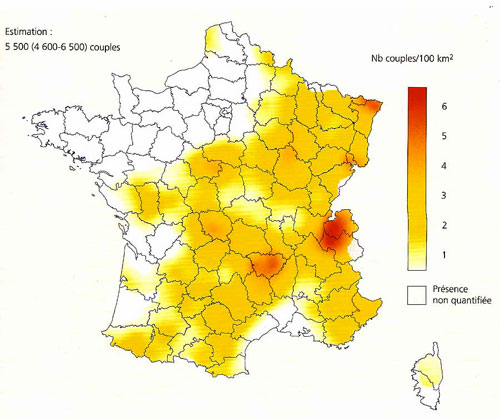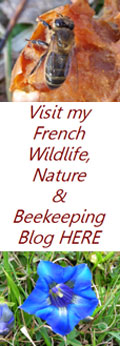Goshawk in France
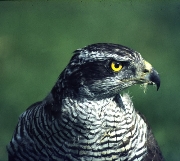

Goshawk -
Accipiter gentilis - Autour des palombes
Overview - Europe &
France
Historically the
Goshawk has been one of the most persecuted birds of prey in
Appearance.
Often described as
“large sparrow-hawks” the female Goshawk is about the size of a Buzzard and
the male Goshawk is slightly bigger than a female Sparrow-hawk.
Both sexes have
close horizontally grey barred under parts with small, black, vertical
streaks on the throat and a long broadly barred grey tail with broad whitish
eyebrows and piercing orange-yellow eyes. The cere (flesh at the base of the
bill) is greenish-yellow and the legs are yellow.
The male is smaller
than the female and has a dark patch behind the eye. The female is browner
than the male and is the heaviest bird of the genus Accipiter. Overall it is
a fierce looking bird and rightfully so.
Juveniles are paler
and browner, with teardrop marks on their under parts and greenish eyes.
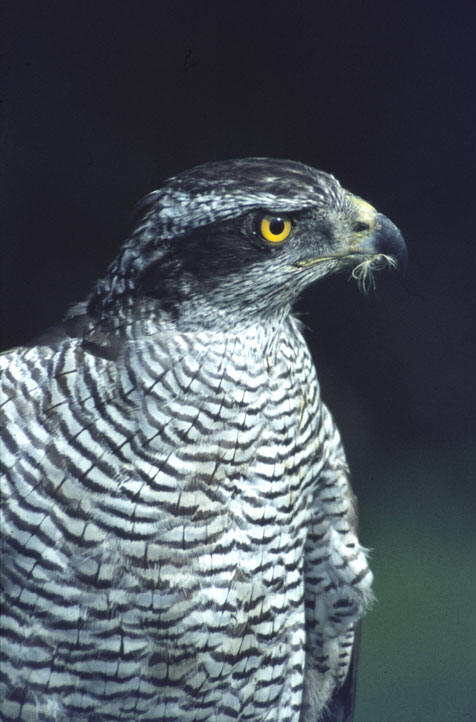
Behaviour,
Habitat and Diet.
Large woodlands
with clearings are the preferred habitat, either mixed or broadleaved, but
they will also be found where there are scattered copses and fields with
hedgerows as long as there are some large mature trees present. Goshawks are
powerful birds and prey on medium to large sized birds and mammals, wood
pigeons, doves, starlings, hares and rabbits being typical and they will
easily overpower creatures much heavier than their own body weight. Capable
of making rapid turns whilst using incredible bursts and changes of speed
they relentlessly pursue their chosen victim which they grab in their
powerful talons either in flight, from the ground or from trees. On open
land they can pursue their prey for as far as a kilometre. They will
occasionally perch using available cover, such as hedges, to take the prey
completely by surprise. Once the goshawk has caught its prey in its talons
it kills it with a kneading motion and will often return to a favourite
perch to pluck the prey before eating it, although plucking will often take
place on the ground. Flight is direct and purposeful at or a little below
tree-top level, with four or five quick, sharp wing beats followed by a
short glides.
They have a hunting
zone of up to 2,000 hectares in summer and as much as 5,000 hectares in
winter.
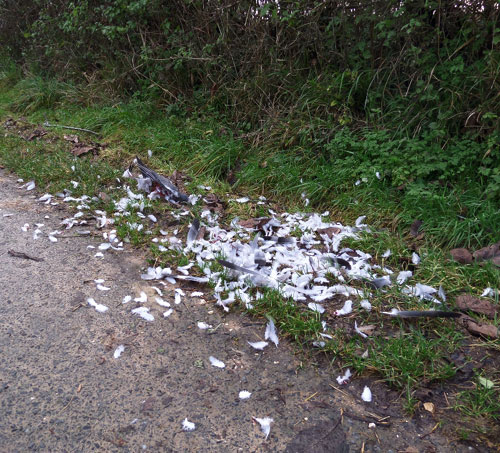
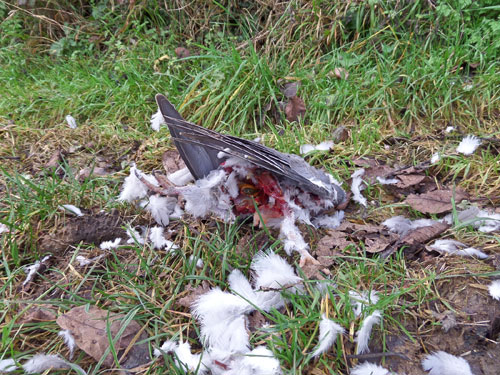
Reproduction.
Status, threats and menaces.
The most recent indications are that the populations
are stable. Direct destruction still continues to pose a problem although
this type of persecution continues to decline. There have been some
incidences of young Goshawks being taken illegally into captivity for use in
illicit falconry. The other major threat, which is on the increase, is the
cutting of woodland during the period from the 15th March to the 15th July,
either destroying nests or causing excessive disturbance. In addition the
increases in coniferous forestry with a corresponding loss of deciduous
woodland could be a cause for longer term concern.
Size: Male 49-56 cm, Female 58-64 cm.
Wingspan: Male 93-105 cm. Female 108-127 cm.
Weight: Male, 500-1100 gr. Female, 800-1350 gr.
Maximum age: 19 years.
